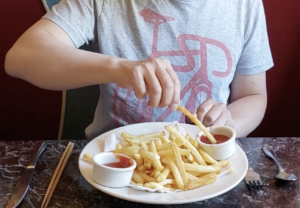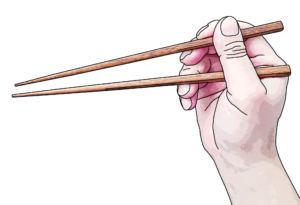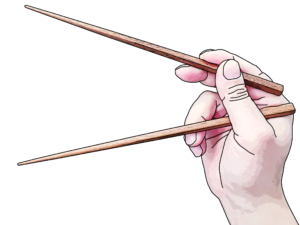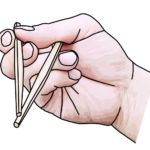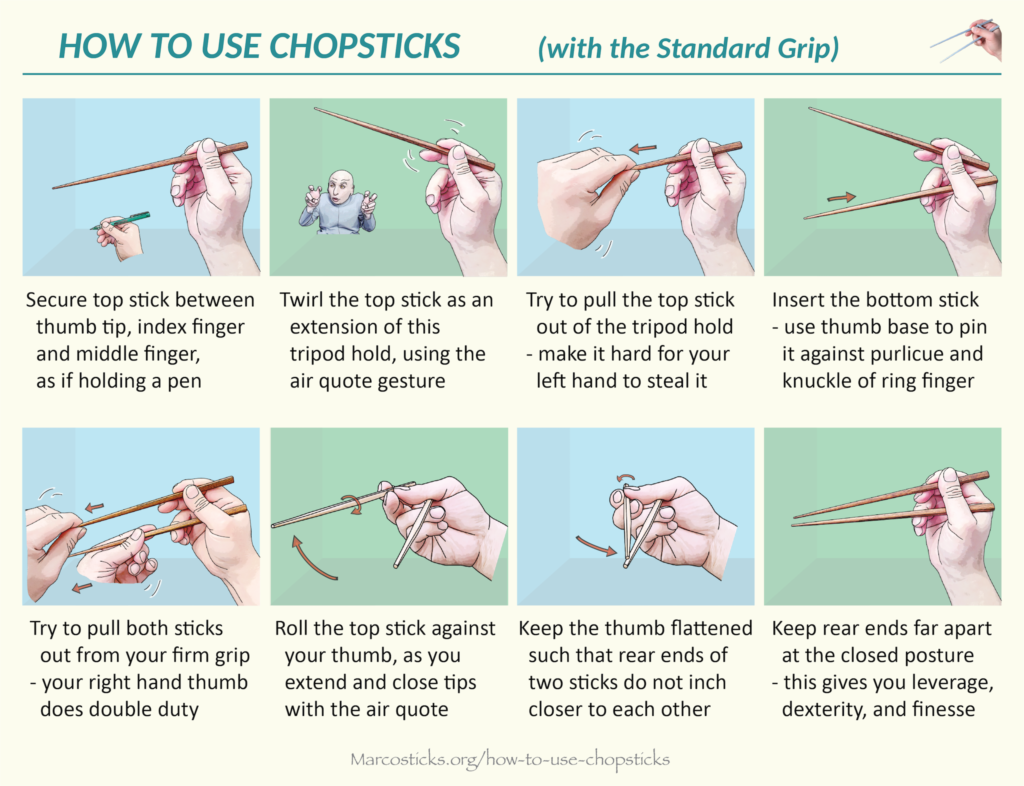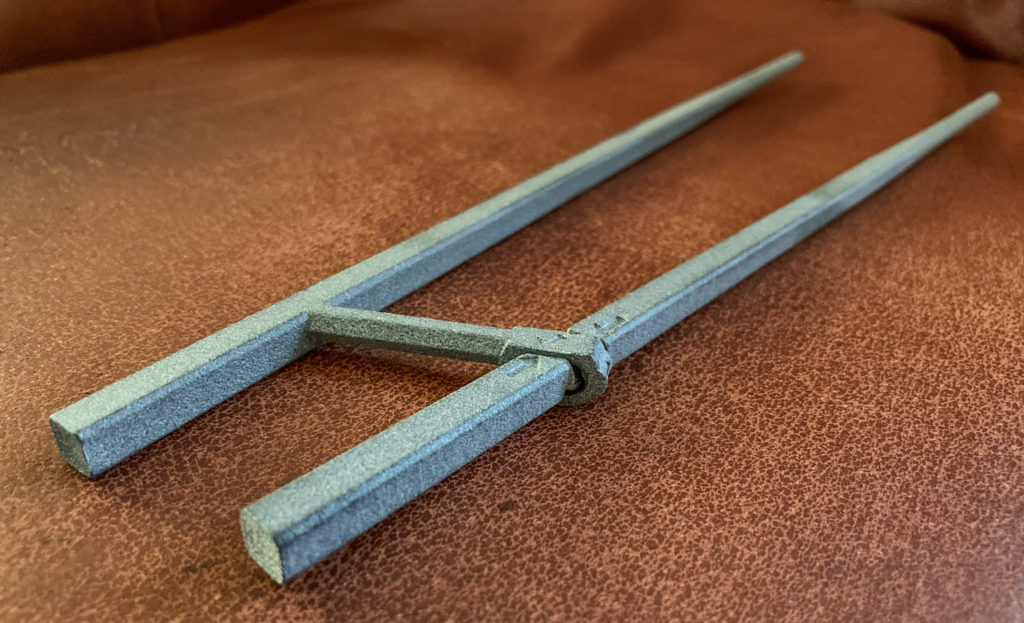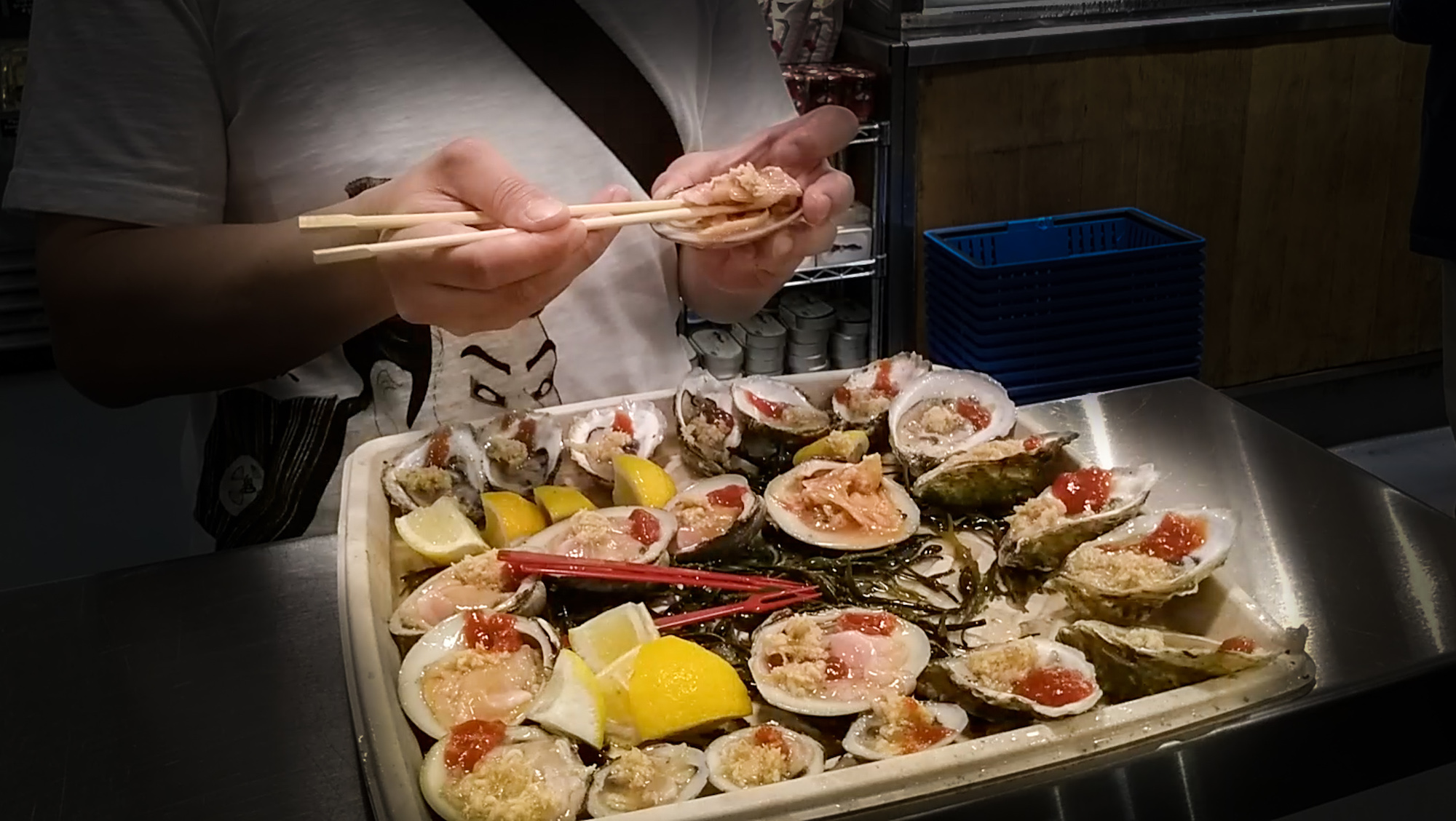
All utensils are equal, but some are more equal than others
an inequality observed by Marco Polo
Our mission at marcosticks.org can be summarized by our attempts to answer two questions. The first is, “why can’t you use chopsticks with french fries?” And the second is, “why can’t you use unconventional chopstick grips?”
Today’s world is one where using chopsticks at a Western, fine dining restaurant invites unwanted murmur from other tables. In today’s chopstick-using countries, folks get bullied for using chopsticks “wrong”, generally by folks who are unaware that they, too, use chopsticks with unconventional grips.
Our mission is to raise awareness globally on the use of chopsticks. We want the world to be one where chopsticks can be used, whenever they are the right eating utensil for the type of food being served. This we call #UtensilEquality. We want the world to be one where different chopstick grips can be used without shame, when unconventional grips best work for certain people. This we call #GripEquality.
To achieve these goals, we have turned marcosticks.org into the most informative website on chopsticking. And by chopsticking, we mean the “use of of chopsticks”. There are plenty of online and printed resources on “chopsticks”.* But information on actual finger dynamics involved in using chopsticks is few and far between. This website aims to fill in that gap.
Why can’t you use chopsticks with french fries?
Some of us have been brooding over the issue of utensil inequality for longer than others. Countless foodies have suffered at the hands of the hospitality industry which prefers the “traditional ways”. By traditional ways, the dogmatic means the status quo where any given ethnic food can only be served with eating utensils that were available to its indigenous population hundreds, or even thousands of years ago.
But globalization happened. The world is a much smaller and flatter place now. Shouldn’t we be picking up french fries at fine dining restaurants using better utensils than fingers now? Clearly knives and spoons are not the right tools for fries. Perhaps metal forks work, some of the times. You can stab a piece of fry in the middle for better purchase. If you are unlucky, it slips off the fork as you reach for your mouth. If you are truly unlucky, you bite into the metal fork. Can’t anyone think of a better eating utensil that may do a better job?
Imagine a pianist being told she can’t play the Bach Goldberg Variations on the piano at the Carnegie Hall, because that is not traditional. A harpsichord must always be used to play Bach’s music, because it was the only readily-available instrument at Bach’s time. Well, today’s culinary world continues to cling to this foolish notion of “upholding tradition”, and no one bats an eye.
To be sure, the tide is starting to turn. One can ask for a fork at a Chinese restaurant in America, without attracting any attention from fellow diners. Now that oyster bars are often found next to sushi bars, one can borrow a pair of chopsticks for shuffling and for picking up clams and oysters, instead of relying on puny oyster forks. In addition, eating Doritos and Cheetos with chopsticks is becoming a thing in pockets of America.
In order to break the taboo that chopsticks are not to be used for Western food, we need to reshape their image. While some urban Americans pride themselves in being able to use chopsticks, many patriots deride the practice as primitive use of twigs. In the first two years of marcosticks.org, we foolishly avoided using the word “chopsticks” in the entire website, except for this “About” page you are now reading. We tried to refer to them by the name Kublai Khan called them, Marcosticks, after Marco Polo.
We no longer insists on tilting at windmills. We now believe it is better to simply “own” the word. We’ll just have to rebrand “chopsticks” as a cosmopolitan and first-class eating utensil.
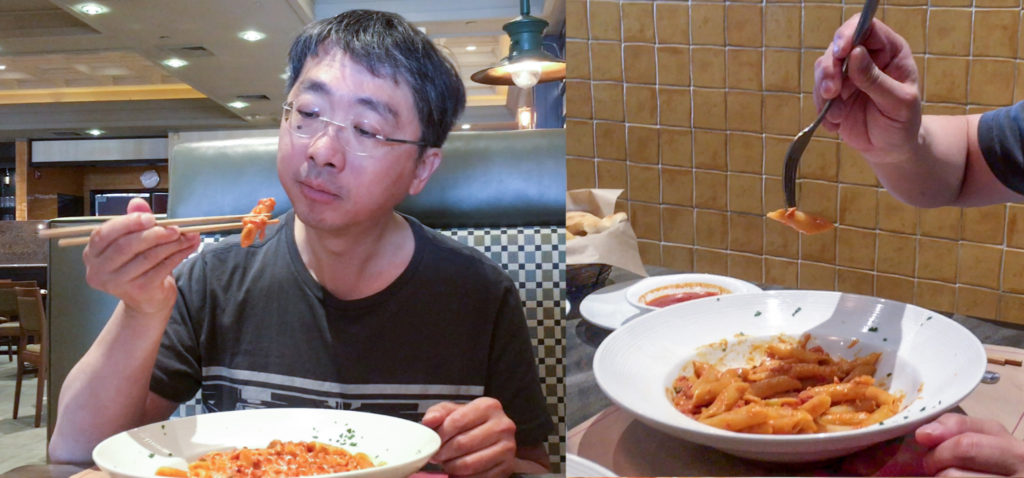
Why can’t you use unconventional chopstick grips?
Most people from chopstick-using cultures can relate to the common experience of someone being ridiculed, for using chopsticks the wrong way. Almost always, the accuser is unable to articulate why the wrong way is wrong, except that it is “not correct”. Often the accuser himself wields a grip that someone else would deem incorrect.
Our research shows that there are at least 30 non-standard chopsticks grips. We have analyzed and published 20 grips by 2020. The following picture shows the most common 12 grips.
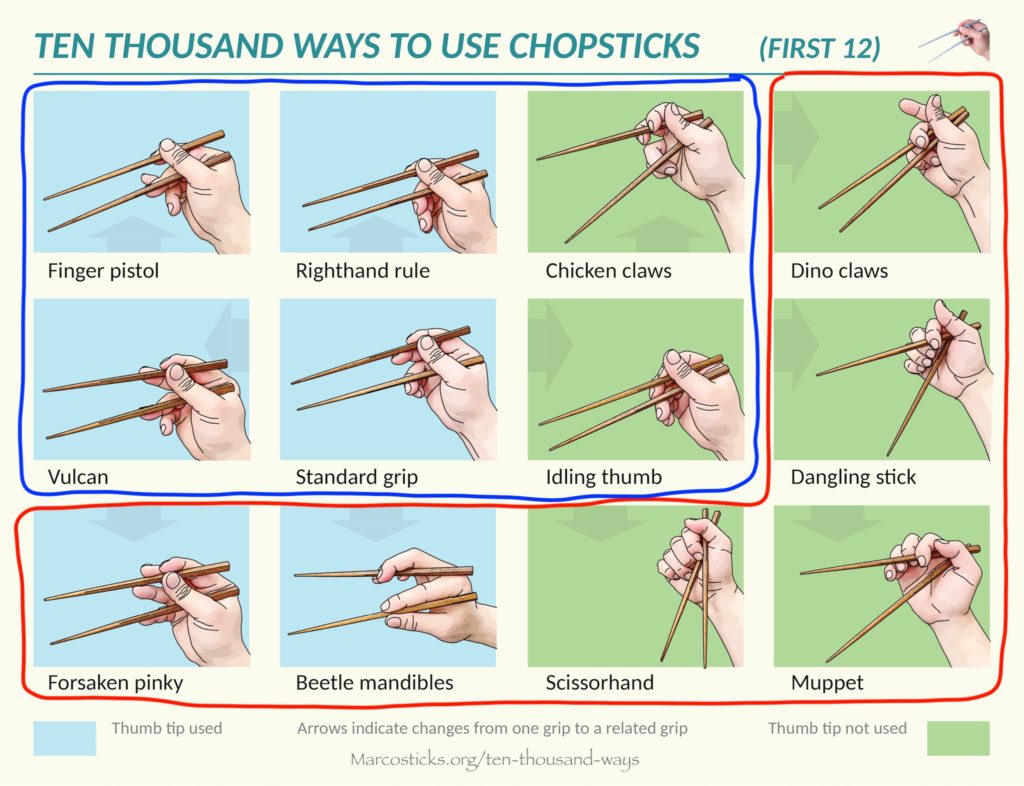
A majority of people believe that they use the “right grip”, when upon close inspection we find that they actually wield a variety of grips, circled in blue above. Folks using so-called “wrong grips” circled in red are often targets of ridicule.
No one can explain why blue grips are right, and red grips are wrong. But how-to-use-chposticks instructions consistently illustrate only the Standard Grip as the right way to use chopsticks. So, which grip is the right grip? And by what objective measures are all other grips wrong?
To untangle this mess, we began by writing and explaining how fingers actually moved these two chopsticks using Standard Grip. Puzzlingly no one had written about chopstick finger dynamics, at this level of detail. Standard Grip turned out to rely less on the lever as a mechanical advantage, than it relies on planetary gears. We continued to record, study and publish 20 common chopstick grips that lifelong users and adult learners showed us. These were tentatively placed on an evolving family tree of chopstick grips.
Once we had substantial data, we could start on comparative analysis. We filled in gaps such as the confusion over crossedness, in the lackluster history of chopstick research. We explained the relationship between penhold and chopstick grips. We documented the use or disuse of the thumb pad as a good factor classifying grips. And finally, we confirmed our long suspicion that a large number of chopstick users could not flatten their thumb into the Caswellian thumb pose required by Standard Grip.
These are dry topics. But they are necessary foundational science required, before we can achieve two outcomes. First, we want to develop a how-to-use instruction sheet, for every alternative grip we have documented. These will surprise even lifelong users with new secrets about their familiar grips, and allow them to further improve their grips.
We believe that one day, using an alternative grip will no longer be a shame. On the contrary, mastering many grips in one’s chopsticking repertoire, and being able to wield the right alternative grip at the right occasion, shall become a feat worth bragging about. That’s when we have #GripEquality.
The second outcome has to do with chopstick learning tools. We systematically analyzed various learning chopsticks available in the market. And we found them lacking. These do not teach Standard Grip, and cannot be used comfortably with other alternative grips. So we designed our own training chopsticks based on our insights into the physics of chopsticking. You can print them out on your own 3D printers.
Join our cause
We came to know Dr. Rosemary Sassoon of the Sassoon Primary (font) fame, in early 2021. We just wanted to ask for permission to use penhold drawings from her book, The Art and Science of Handwriting. But we soon found Dr Sassoon, now in her 90s, to be likeminded in our shared quest to change people’s minds. While we just got into the business of abolishing traditional notions about chopstick grips, she has already dedicated the majority of her adult life decimating the foolish preconception of the “one right penhold”. In her honor, we name our retrospective on two year’s research and results, The Art and Science of Chopsticking.
This website will house no ads. This organization is not about making a profit. All content on this site can be freely shared with attribution, as noted on the footer. All 3D-printable models of chopsticks, training chopsticks, ergonomic chopsticks, finger helpers, and chopstick buddies posted on this site can be freely used without royalty or licensing fees. Just attribute these uses to Marcosticks. That is all that is required, even though we have already been granted 2 utility patents and 2 design patents so far on these inventions.
If you find our cause to your liking, you can make it yours, too. Head to the How to Help page.
—
* For a comprehensive accounting of the history of chopsticks, please get the book Chopsticks: A Cultural and Culinary History, by professor Q. Edward Wang. It’s published by Cambridge University Press. 2015. ISBN 9781107023963.
#AboutOurMissionAtMarcosticks
Published on Aug 16, 2019
Last Updated on January 30, 2022 by Staff
